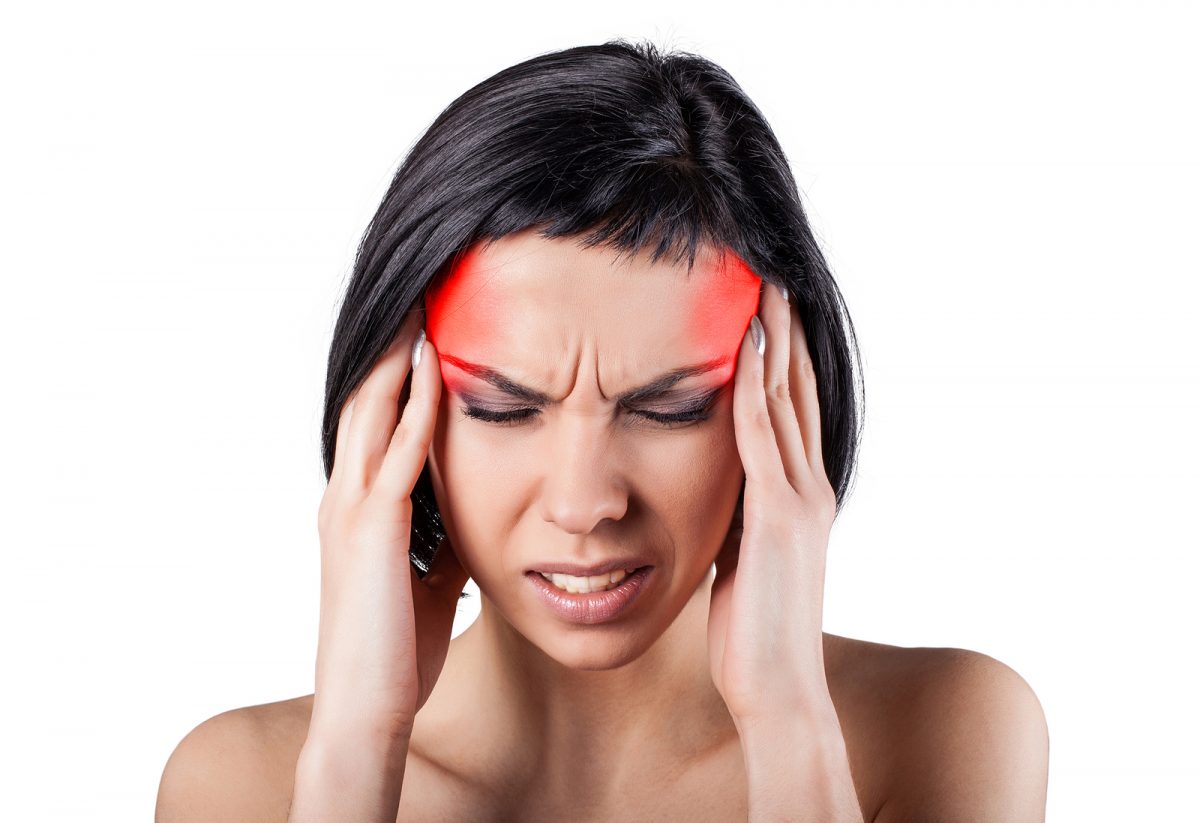Migraines are caused by inflammation of blood vessels in the brain, called vasodilation. The nerve fibers that wrap around the blood vessels are stretched which cause them to release chemicals that then trigger further inflammation and increased pain. The more inflammation there is, the larger the blood vessels expand, releasing more chemicals, and the more pain is experienced.
Twenty-eight million Americans suffer from migraines. The pain of migraine headaches can be debilitating. It can be moderate to severe, last four to 72 hours, and include various other symptoms such as pounding or throbbing in one or both sides of the head, a sensitivity to light, sounds, and smells, upset stomach or nausea with or without vomiting, abdominal pain, loss of appetite, and feelings of being too warm or too cold.
Symptoms of Migraine Headaches
Each person’s and each migraine’s symptoms can differ. There are five stages of a migraine:
- Prodrome – This is the warning phase, which can occur a few hours to a few days before the actual headache. It may be characterized by mood changes such as irritability, depression, or elation. Fatigue, sleepiness, or muscle tension are also symptoms.
- Aura – Although not common (experienced by less than 20% of sufferers) an aura usually starts about 30 minutes before the onset of the migraine. The symptoms include dancing or zigzagging lights that start in the middle of the field of vision and extend outward or blind spots (scotomas).
- Headache – The pain can begin as an ache that progresses to a throbbing or pounding pain in one or both sides of the head. Sensitivity to light, sound, and smells occur in 70% of sufferers. Nausea is experienced by about 80%. This is the longest phase and can last from four hours to three days or longer.
- Headache Termination – Sometimes either prescription or over-the-counter medications are needed to help alleviate pain and symptoms. In the absence of treatment, migraines will usually go away with sleep.
- Postdrome – Some symptoms such as fatigue, loss of appetite, or a dull headache can remain for approximately 24 hours after a migraine. Many sufferers are more likely to have another migraine during this phase.
Relief for Migraine Symptoms
There are many things a migraine sufferer can do to either lessen or alleviate pain and symptoms. If sensitivity to light and sound are an issue, resting in a quiet dark room can help. An ice pack or cold compress and pressure on the areas causing pain are also effective (for more natural remedies: http://optinghealth.com.)
Many over-the-counter medications are useful for controlling pain, including acetaminophen, ibuprofen, or ASPIRIN® (also known as non-steroidal anti-inflammatory drugs or NSAIDs) but these can cause re-bound headaches when the medication wears off. Anti-nausea drugs are sometimes needed if the nausea is severe. A doctor can also prescribe medications that are taken at the first signs of a migraine to stop pain or preventative medications that can limit the severity and frequency of headaches.
Migraine Triggers
In people who are susceptible to migraines, certain factors, or triggers, can bring about a headache. Avoiding these triggers as much as possible is one way to help prevent a migraine. Triggers include:
- stress
- sleep disorders such as sleep deprivation or too much sleep
- lowered blood sugar due to fasting
- decrease in estrogen in women
- high intensity visual stimulation or flashing lights
- certain odors
- cigarette smoke (including second-hand smoke)
- alcohol consumption
- aged cheeses (cheddar, blue, Swiss, etc.)
- chocolate
- monosodium glutamate (high doses on an empty stomach)
- nitrate and nitrites (preservatives found in hot dogs, ham, bacon, etc.)
- aspartame (artificial sweetener found in diet soft drinks)
- caffeine (can cause insomnia, irritability, anxiety, and headaches)
Although there is no known cure for migraines, there are certain actions sufferers can take to lessen their frequency and severity. Avoiding known triggers, taking over-the-counter and prescription medications to alleviate symptoms, and an individualized treatment program created by a doctor can improve the quality of life for many of those who suffer from this debilitating condition.
